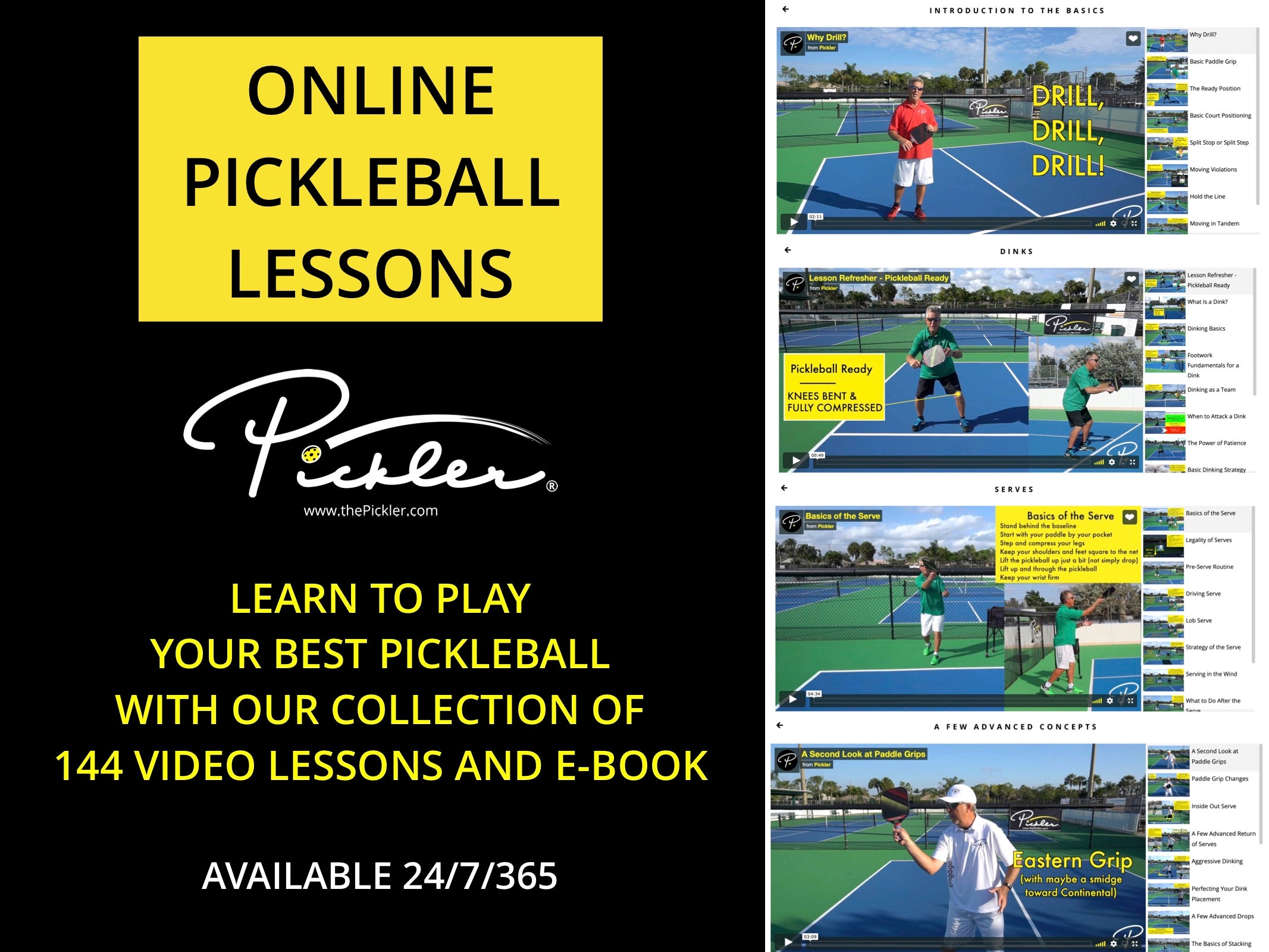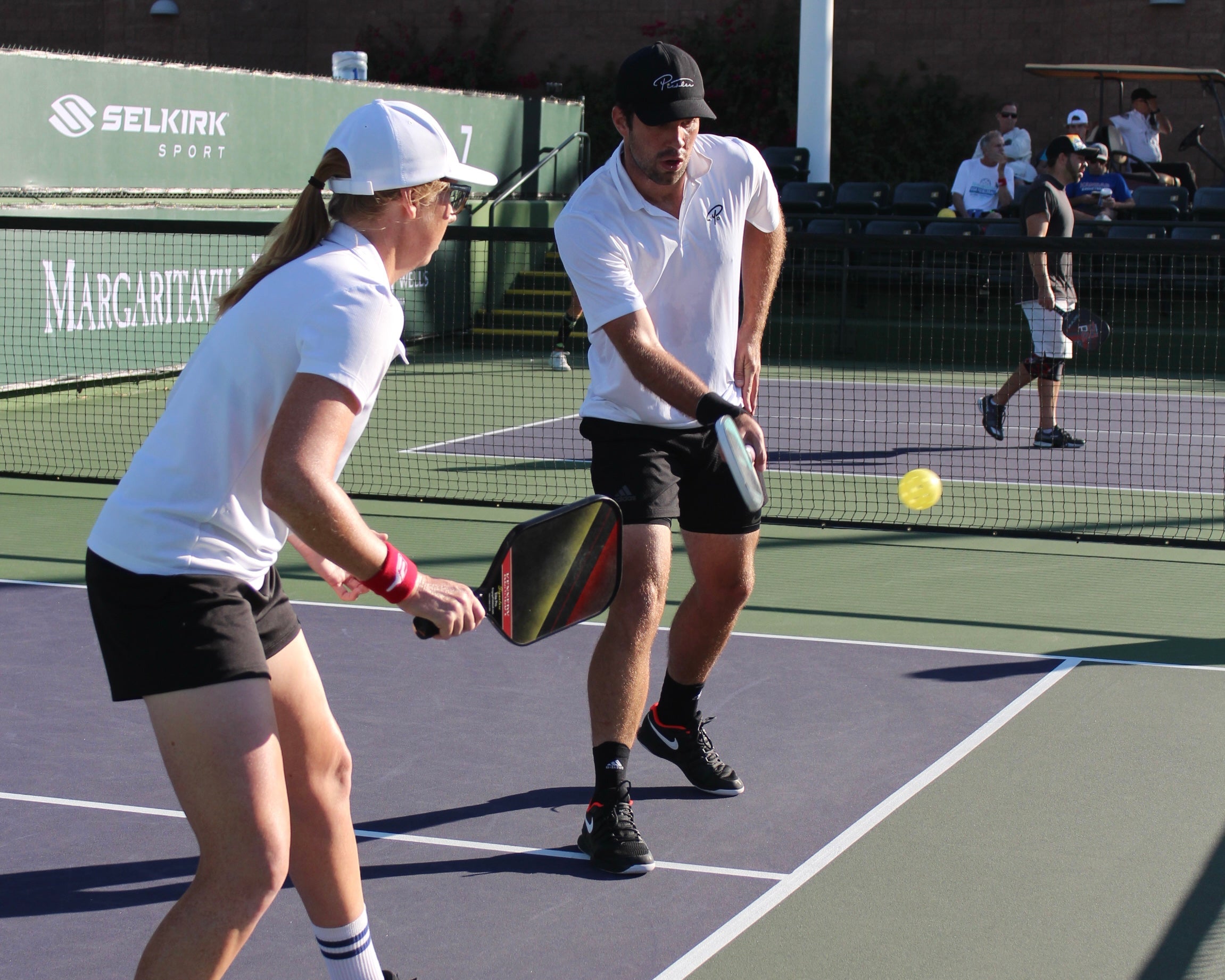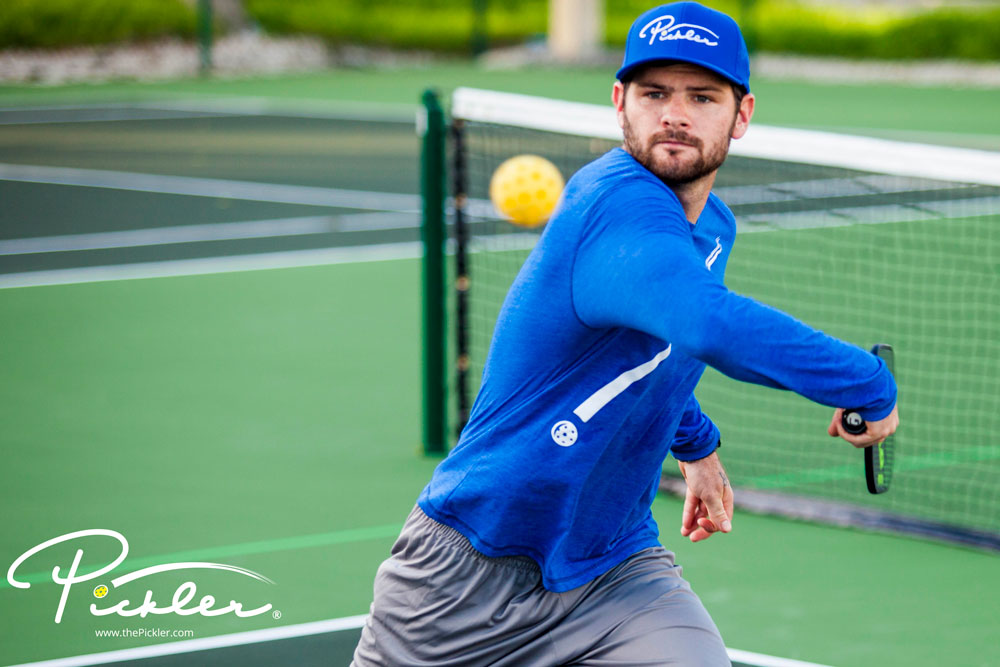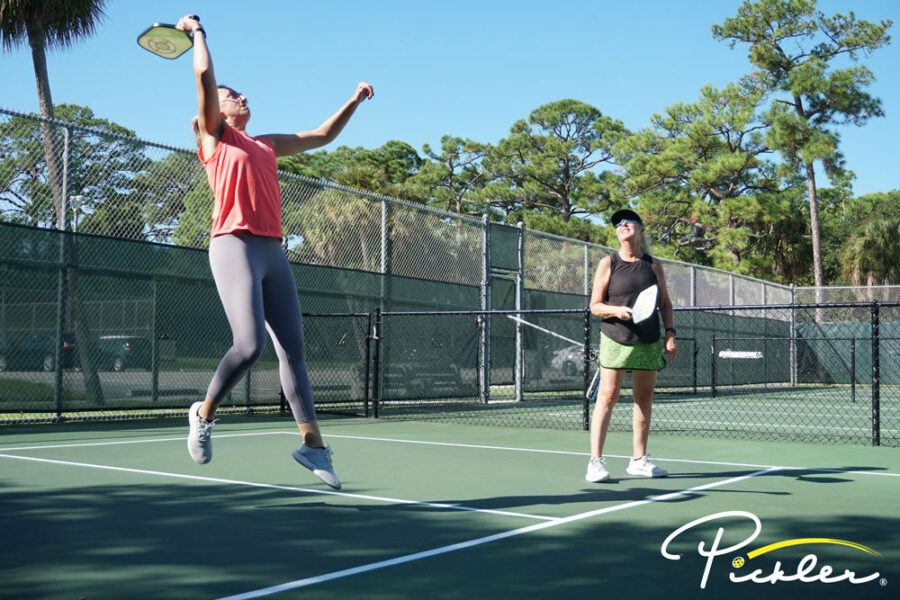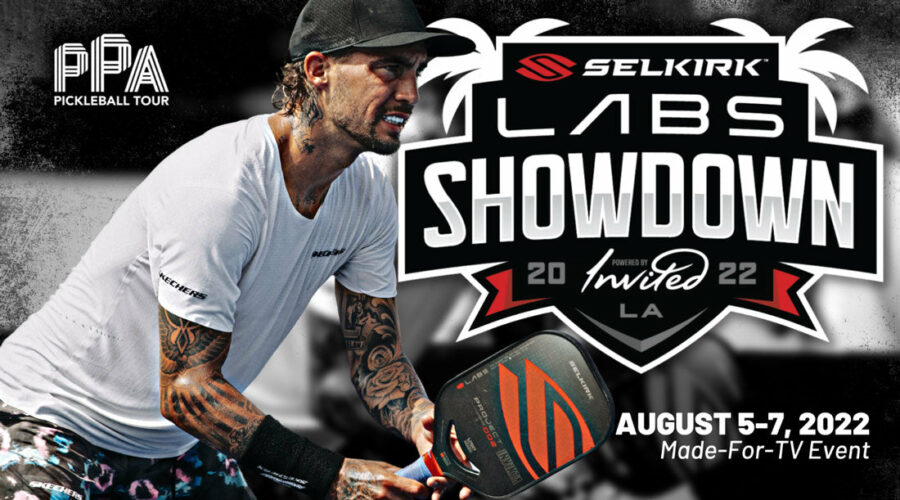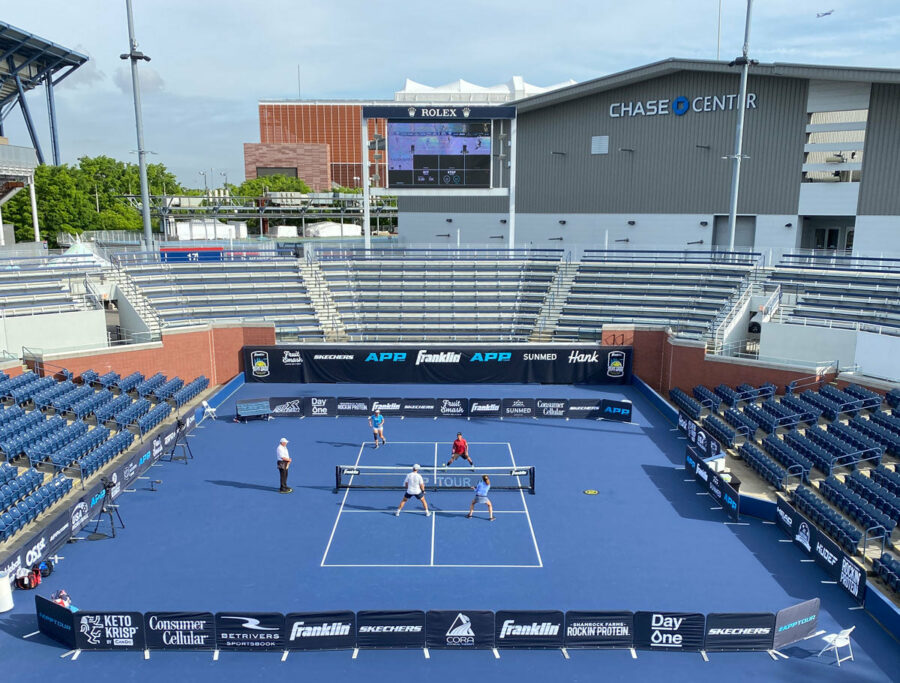The general rule of thumb on the pickleball courts is to work your way to the Non-Volley Zone Line, or “Kitchen Line,” as soon as possible, as most points in pickleball are won at the Kitchen Line. So, when should you start moving in to the Kitchen Line?
Reminder of One of the Cornerstone Rules of Pickleball:
In pickleball, there is a “2-bounce” or “3-hit” rule. In other words, the serve must bounce and the return of serve must bounce or, another way of putting it, the pickleball must be hit three times before you can volley it (a volley is a shot where you hit the pickleball in the air, with no bounce). After the bounce of the return of serve (or the third hit), you or your opponents may either strike the pickleball in the air (in other words, a volley) or off the bounce.
Where to Be as the Serving Team:
When you are the serving team, you should stay back at the baseline to prepare for the return of serve since you are not allowed to volley a return of serve. By staying back at the baseline, you will give yourself plenty of room for the return of serve to bounce. Remember, you always want to hit the pickleball out in front of your body, so do not unnecessarily jam yourself by coming into the court after your serve. Stay at or slightly behind the baseline. After the third hit (whether it is a third shot drop or a third shot drive), you and your partner, as the serving team, should immediately move in to the Kitchen Line.
There are two schools of thought on how immediately you should start moving to the Kitchen Line as the serving team. Imagine your partner is preparing to hit the third shot. One school of thought believes that you should immediately move in to the Kitchen Line as soon as you determine that your partner will hit the return of serve. This gives you the most time to get to the Kitchen Line, puts pressure on your opponents to hit a good return, and allows you to possibly poach or put away a poor return by your opponents, and generally take advantage of more opportunities to win a point. However, you could be “eaten up” by your opponents if your partner hits a poor third shot. For instance, imagine your partner pops up the third shot drop straight into your opponents’ overhead—you will certainly be seeing a fastball straight at you.
The second school of thought is the “wait-and-see” approach. In this approach, you will wait until your partner hits the third shot, evaluate whether the shot is a good or bad third shot, and then, if it is a good third shot, immediately move in to the Kitchen Line.
The school of thought that works for you probably depends on your and your partner’s level of play. For higher level play, you should be able to move in to the Kitchen Line as soon as you determine who will hit the third shot.
However, regardless of what level you are at on the pickleball court, you and your partner should always try to move in tandem. In other words, you and your partner should always try to move together in terms of court coverage side-to-side, as well as how deep you both are in the pickleball court. By staying together, you close gaps and angles that your opponents may have for winning shots. So, try to move together with your partner. The exception to this rule is if you are trying to apply pressure with a poach or even a “Shake and Bake” against your opponents.
Where to Be as the Returning Team:
If you are the returning team, only the player receiving the serve should be behind the baseline. The non-receiving player should already be positioned at the Kitchen Line, as the non-receiving player will not make contact with the pickleball in the first two shots (i.e. the serve or the return of serve). In other words, the 2-bounce or 3-hit rule does not come into play for the non-receiving player, so the non-receiving player should already take the Kitchen Line. Once the receiving player strikes the serve, the receiving player should immediately join his or her partner at the Kitchen Line.
Get to the Kitchen Line!
Remember, most points are won at the Non-Volley Zone Line (also known as the Kitchen Line), so it is imperative that you work your way to the Kitchen Line as soon as possible! However, make sure you are moving in to the Kitchen Line under control. If you move in too wildly, you will not be in a position to properly prepare for the next shot, which could result in unnecessary unforced errors.
WANT MORE PICKLEBALL TIPS AND STRATEGIES?
Want to learn the “Shake and Bake” to use with your partner on the pickleball court?
Plus, if you want more pickleball tips and strategies on every aspect of your pickleball game, check out Pickler’s online video lesson collection called My Pro Pickleball Coach. My Pro Pickleball Coach is a fraction of the price of one clinic or even one lesson, and features over 140 video lessons (over 7 hours of instruction!), as well as a corresponding e-book. These online video lessons are available on demand 24/7 and breakdown every aspect of the sport of pickleball, including pickleball drills, strategy, and advanced concepts, so you will play your best pickleball.
